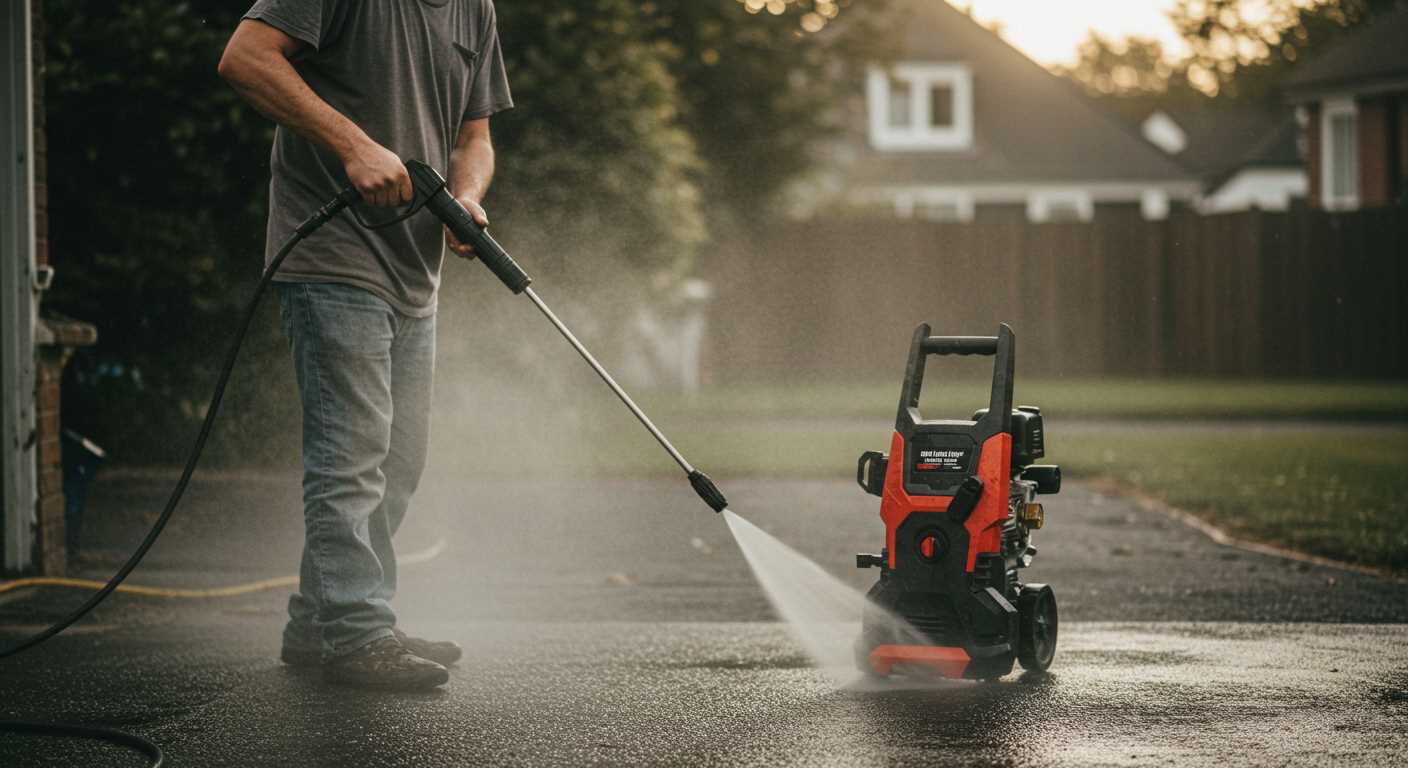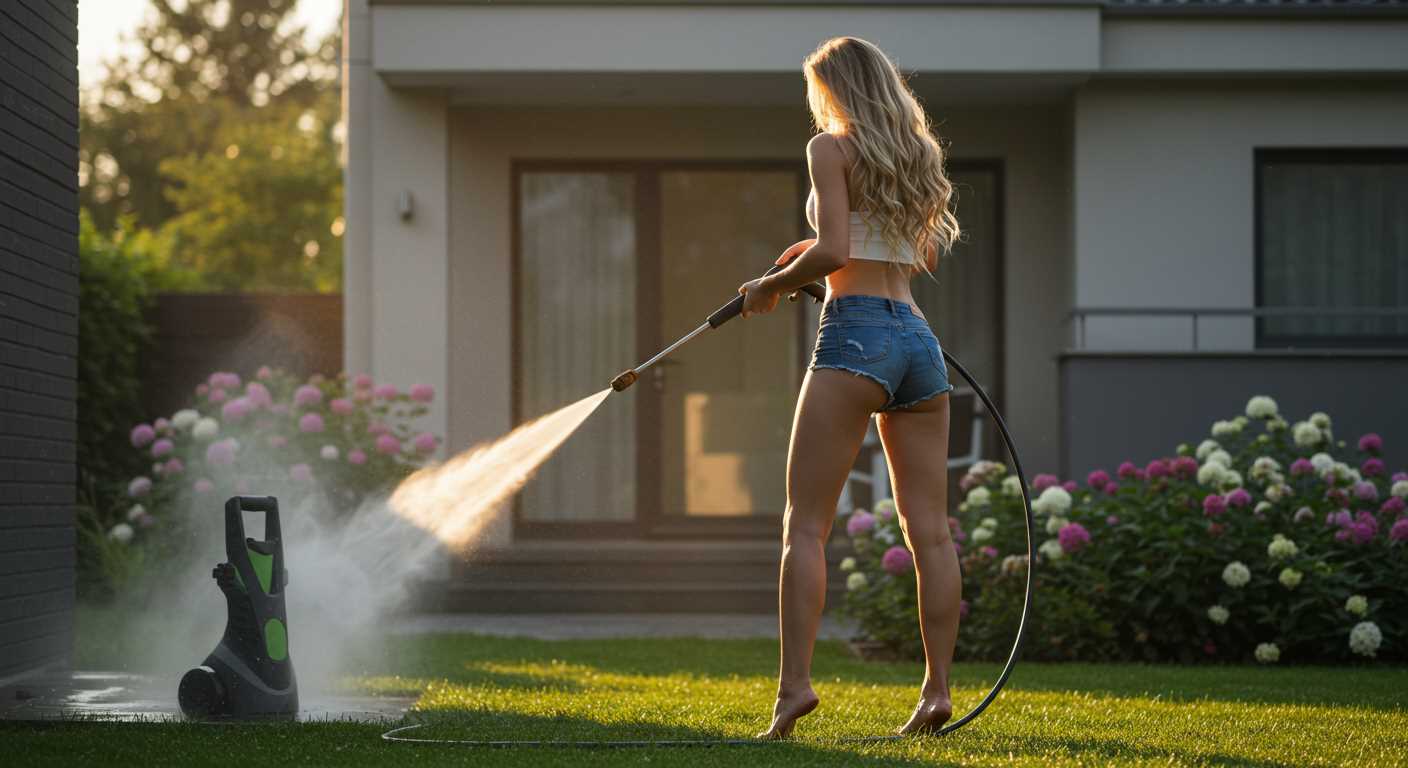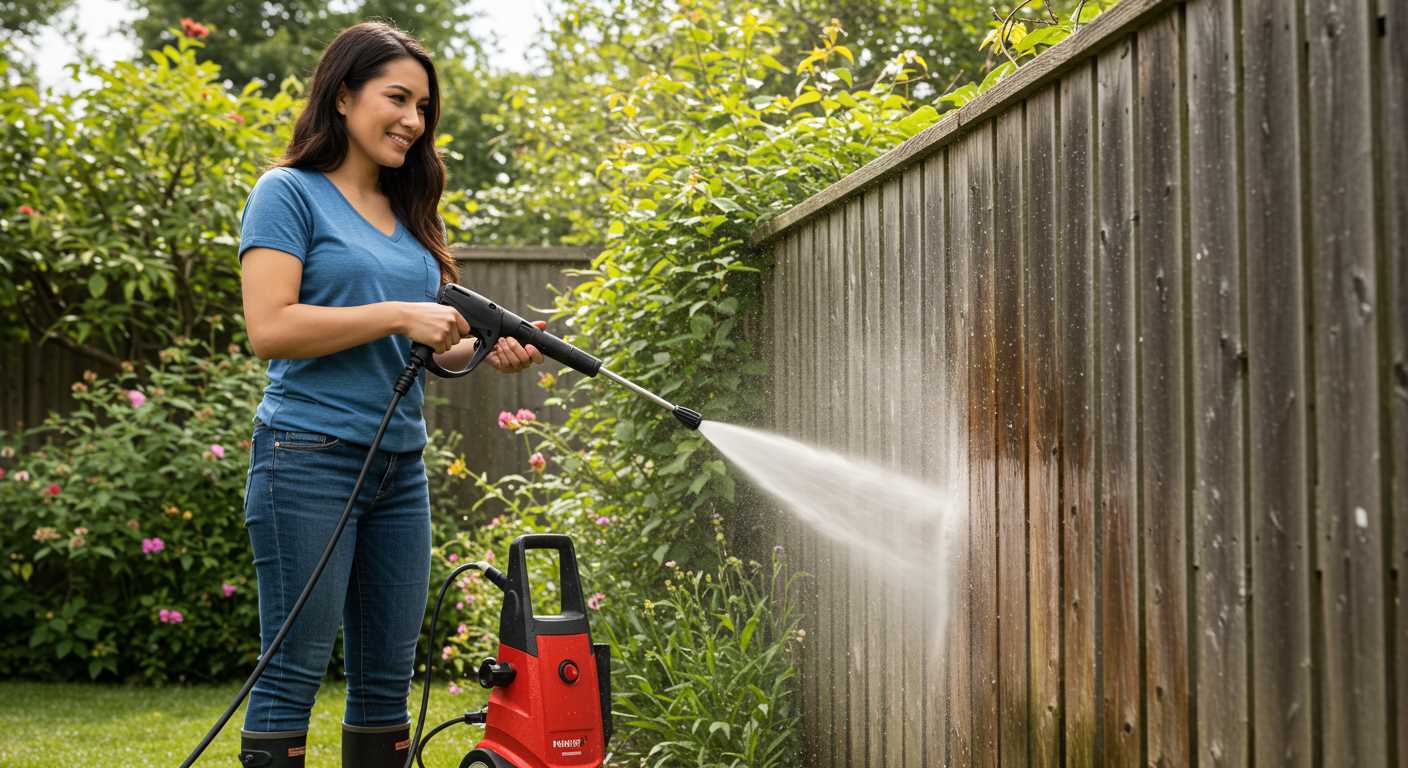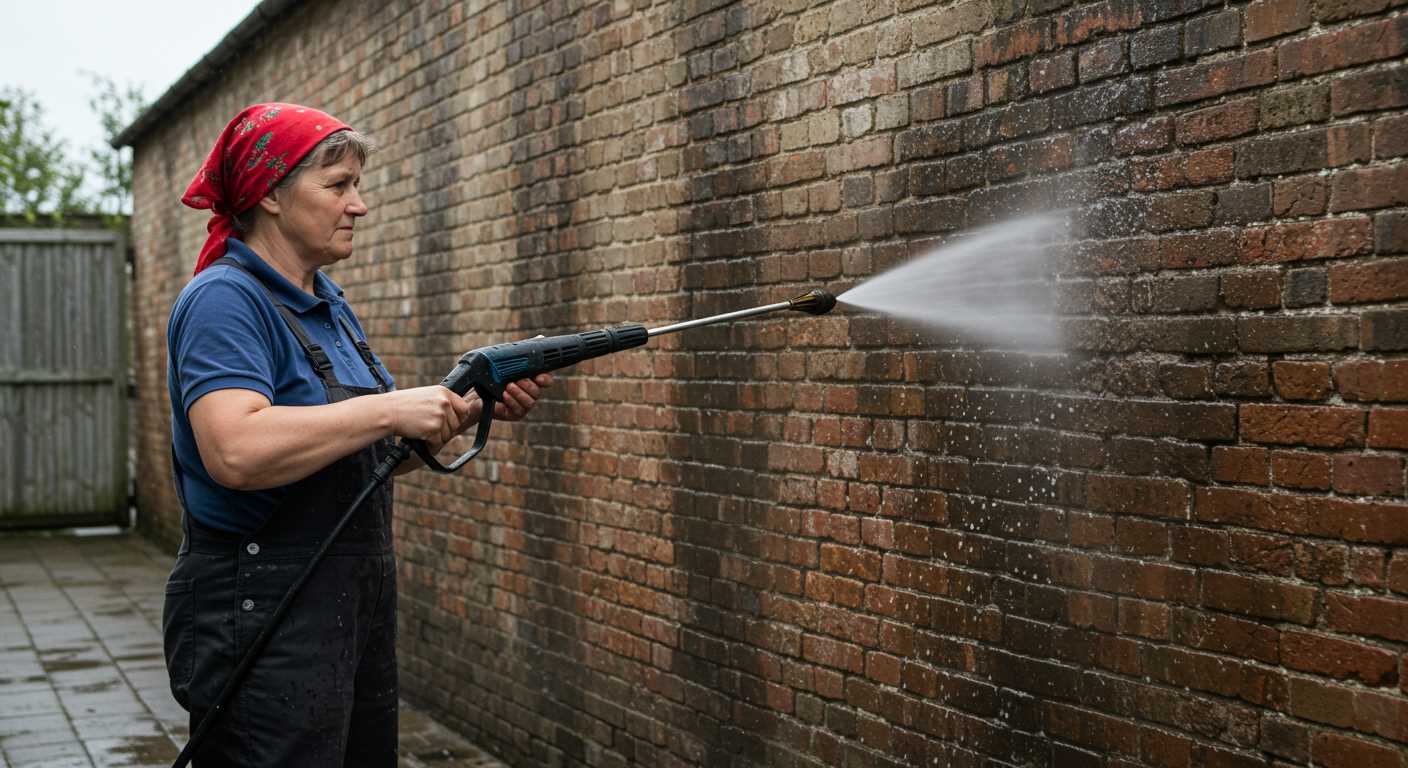



Utilising a high-powered cleaning device on textured wall surfaces can be effective, but caution is paramount. To ensure damage avoidance, select a model with adjustable pressure settings. Keeping the pressure below 1500 PSI is advisable for most textured surfaces to prevent degradation.
Before commencing the process, thoroughly saturate the area with water to loosen grime and ensure protection of adjacent surfaces. Always maintain a consistent distance of around 12 to 18 inches between the nozzle and the surface to mitigate the risk of etching or stripping paint.
Employ a fan spray nozzle for optimal coverage while avoiding concentrated, direct streams. This technique distributes the cleaning power evenly, minimising the potential for harm to the substrate. Start at the top and work downwards, allowing dirty water to flow downwards and keeping the cleaning uniform.
Using appropriate cleaning agents, specifically formulated for textured surfaces, can enhance cleaning results. Always adhere to the manufacturer’s recommendations for dilution and application procedures to achieve the best outcomes.
Understanding the Structure of Stucco
Stucco is a composite material crafted from aggregates, a binder, and water, forming a durable exterior finish applied to buildings. It typically consists of Portland cement, lime, sand, and water, providing a solid surface that is both resilient and aesthetic.
Composition and Properties

The Portland cement acts as the primary binder, giving strength to the mixture. Lime is incorporated to enhance workability and resistance to cracking, while sand provides volume and prevents shrinkage. When properly mixed and applied, stucco creates a thick, hard layer that can withstand weather elements, making it suitable for various climates.
Application and Maintenance
Applied in multiple coats, the first layer is often a scratch coat, followed by a brown coat for added strength, and finally, a finish coat for appearance. Maintenance requires regular inspections, as surface damage or moisture intrusion can compromise its integrity. Utilizing appropriate cleaning methods ensures the longevity of stucco surfaces, preserving their aesthetic appeal and structural durability.
Choosing the Right Pressure Washer Settings
For optimal results, set the pressure to a range of 1500 to 2000 PSI. Higher settings could risk damaging the surface, while lower pressures won’t effectively remove built-up grime. In addition to pressure, select the appropriate nozzle. A 25-degree or 40-degree fan tip is ideal, as it balances pressure and coverage.
Understanding Spray Angles
Different spray angles affect how dirt and stains are removed. Here’s a concise overview:
| Nozzle Angle | Application |
|---|---|
| 0 Degrees | Direct spray for tough stains; potentially damaging. |
| 15 Degrees | For heavy-duty tasks; targets specific areas. |
| 25 Degrees | Versatile option for various surfaces. |
| 40 Degrees | Gentle spray, suitable for delicate surfaces. |
Additional Settings Considerations
Incorporate a detergent setting if necessary. This allows for the use of cleaning solutions that enhance the removal of stubborn stains. Ensure the detergent is compatible with the equipment and surface type. After selecting the right settings, maintain a distance of around 12-18 inches from the surface to prevent damage.
Tools Required for Cleaning Stucco

To effectively refresh the exterior finish, gather a few key items before starting. A quality electric or gas-powered cleaner is fundamental, offering the right pressure to lift dirt without damaging the surface.
Opt for a 15-degree nozzle for optimal results. This attachment focuses the water stream, allowing for thorough removal of grime. A wider nozzle may be suitable for rinsing.
A detergent injector is beneficial for applying cleaning solutions. Use a dedicated stucco cleaner that is safe for this material to break down stubborn stains. Ensure the solution is compatible with the spray equipment.
A scrub brush with stiff bristles assists in lifting dirt effectively, especially in areas where the machine cannot reach. Choose a long-handled version to provide easy access without exerting excessive effort.
Safety gear should not be overlooked. Protective eyewear prevents debris from entering the eyes, while gloves safeguard hands from harsh chemicals. Consider a mask to avoid inhaling any aerosols during the process.
Lastly, a hose with suitable length helps manage water supply effortlessly. Ensure it connects properly to the cleaning device for a continuous water flow during operation.
Step-by-Step Guide to Cleaning Stucco
Begin by gathering the necessary materials for the task. Ensure you have a sturdy ladder, a quality detergent suitable for textured surfaces, a brush with soft bristles, and a bucket. Safety gear, including goggles and gloves, is also critical.
Preparation Phase
- Remove any furniture or obstacles near the surface.
- Cover plants, windows, and any fixtures with plastic sheeting to prevent damage from cleaning agents.
- Inspect the area for any visible cracks or damage–these should be repaired before proceeding.
- Mix the cleaning solution per the manufacturer’s instructions in a bucket.
Execution Phase
- Using a long-handled brush, apply the cleaning solution to the surface. Work in sections to ensure even coverage.
- Allow the detergent to sit on the surface for about 10-15 minutes for optimal effect, but don’t allow it to dry.
- Rinse the area with clean water, starting from the top and moving downwards to prevent streaking.
- For stubborn stains, it’s permissible to repeat the application and rinsing process if necessary.
- Examine the surface once dry for any missed spots or areas that require additional cleaning.
After the cleaning process, remove protective coverings and inspect the surroundings for any residual cleaning solution. Rinse off any areas where the solution may have dripped onto nearby surfaces.
Common Mistakes to Avoid When Cleaning
Avoid excessive pressure settings; using high force can damage the surface, leading to cracks or peeling. Stick to recommended PSI levels for the specific material.
Rushing the Process
Take your time. Skimming through the steps may leave dirt behind, requiring extra effort later.
Neglecting Protective Measures
- Always wear goggles to protect your eyes from debris.
- Consider using a respirator if mould or mildew is present to avoid inhaling spores.
- Cover plants and landscaping nearby to prevent damage from cleaning solutions.
Mixing cleaning solutions improperly can result in ineffective cleaning or surface damage. Follow manufacturer guidelines closely and test on a small area first.
Ignoring Weather Conditions
- Avoid cleaning in direct sunlight as it can cause cleaning solutions to dry too quickly.
- Choose a day without strong winds to prevent overspray and protect the surrounding area.
Don’t skip rinsing after applying detergents. Residual chemicals can cause staining or deterioration over time.
Improper Technique

- Always aim the nozzle at a 45-degree angle to avoid forcing water behind the facade.
- Use sweeping motions instead of concentrated blasts to ensure even coverage.
Stay mindful of surfaces adjacent to the one being treated. Unintended splatter can cause clean areas to appear dirty and may require further attention.
Post-Cleaning Care for Stucco Surfaces

After completing the washing process, it’s critical to apply protective measures. Start by allowing the surface to dry completely for at least 24 hours. This prevents moisture retention, which can lead to mold and mildew growth.
Inspect and Repair
Conduct a thorough inspection for any damages or cracks. If found, use a suitable stucco patching compound to repair these areas. Ensure proper adhesion by cleaning the affected sections before applying the compound.
Sealant Application
Applying a breathable sealant enhances protection against moisture and stains. Look for a product specifically formulated for textured surfaces. Follow the manufacturer’s instructions for application, typically requiring a clean surface and suitable temperature conditions. Reapplying sealant every two to five years can prolong the surface’s life.
Regular maintenance is essential. Schedule a gentle wash every 6 to 12 months to prevent buildup. Pay attention to weather conditions, as prolonged exposure to rain or sun can affect the integrity of the surface.
Keep landscaping and vegetation trimmed back to allow airflow and prevent moisture accumulation against the stucco. Use caution when painting or applying additional finishes to ensure compatibility with the existing material.
Staying informed about the latest products and techniques will aid in preserving the appearance and durability of your exterior. By taking these steps, I found my stucco surfaces remained attractive and resilient, standing the test of time.
When to Hire a Professional for Stucco Cleaning
If you notice extensive mould, mildew, or stubborn stains that resist basic cleaning methods, it’s time to consider enlisting the help of a specialist. These issues may require advanced techniques that exceed standard DIY capabilities.
Signs Indicating Professional Assistance is Necessary

When damage from water infiltration or cracks appears, a professional should assess the situation. Their expertise ensures that the underlying problems are addressed, not just the surface. If your surface displays heavy discolouration or if previous attempts have resulted in deterioration, expert service guarantees a thorough and safe approach.
Safety and Equipment Considerations

If working at heights or using specialised equipment feels uncomfortable, it’s wise to leave the task to a trained individual. Professionals often possess advanced tools and techniques that ensure the integrity of the material while also managing safety risks effectively. Specialized methods for delicate areas or historical properties also require a level of knowledge that ensures no further damage occurs.
FAQ:
Is it safe to clean stucco with a pressure washer?
Cleaning stucco with a pressure washer can be safe if done correctly. It’s important to use the right pressure setting, typically around 1300 to 1600 psi, to prevent damage to the surface. Using a wider spray nozzle will also help avoid concentrated pressure that can chip or strip the stucco. It’s recommended to test a small, inconspicuous area before proceeding with the entire surface. Additionally, make sure to keep a consistent distance from the wall while washing to minimise any risk of damage.
What techniques should I use when pressure washing stucco?
When pressure washing stucco, start by preparing the area around the house. Move any furniture or decorations away from the walls. Wet the stucco surface with plain water to loosen any dirt. Then, apply a cleaning solution specifically designed for stucco, if necessary. Use a pressure washer with a fan tip nozzle and keep it about two feet away from the wall. Start from the top and work your way down in straight lines, ensuring even coverage. Rinse thoroughly to remove any cleaning products and dirt residues. Always refer to manufacturer’s guidelines for both the pressure washer and the stucco for best results.
How often should I clean my stucco with a pressure washer?
The frequency of cleaning stucco with a pressure washer can vary based on the environmental conditions. Generally, it’s advisable to clean stucco every one to two years to maintain its appearance and prevent the build-up of mildew or mould. However, if you live in a particularly humid area or near the coast, you might need to clean it more frequently. It’s also important to inspect the stucco after heavy storms or significant dirt accumulation to determine if a cleaning is needed sooner. Regular maintenance can extend the life of your stucco exterior significantly.








